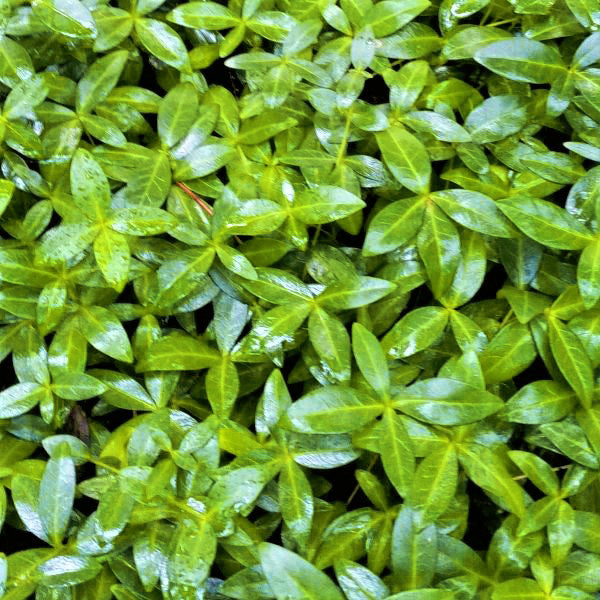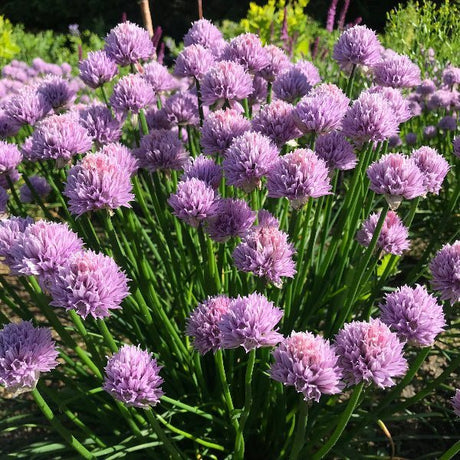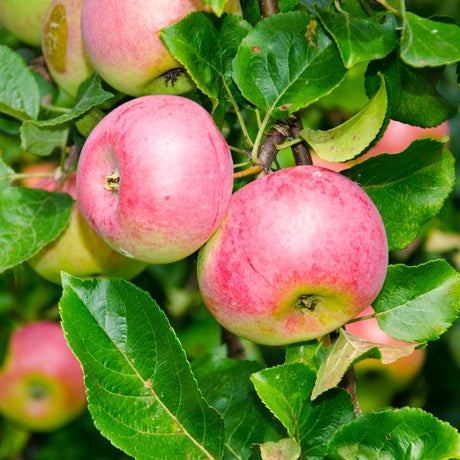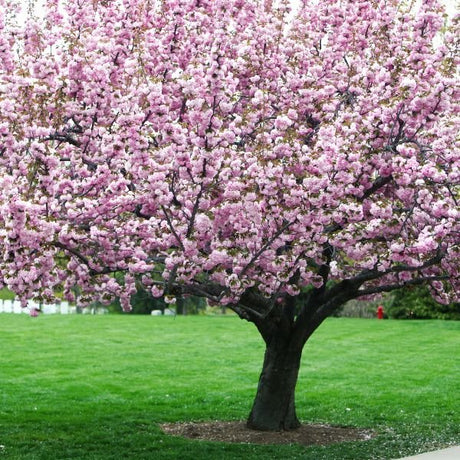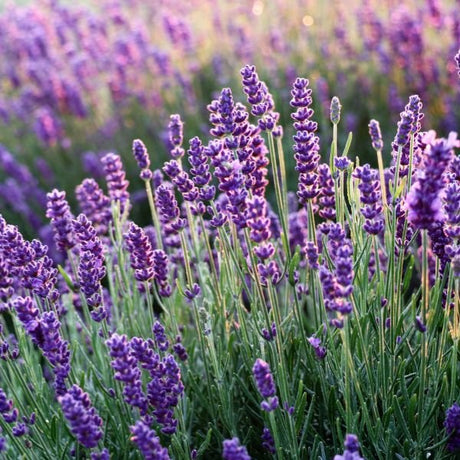Periwinkle
Vinca minor
- Stay Protected with Plant Sentry ™
Periwinkle - Quart Container is backordered and will ship as soon as it is back in stock.
Plant Sentry™
Plant Sentry™

Plant Sentry™ Protected
Your order is protected by our compliance system that:
- Prevents restricted plants from shipping to your state
- Ensures plants meet your state's agricultural requirements
- Protects gardens from invasive pests and diseases
Delivery and Shipping
Delivery and Shipping
Delivery and Shipping
Fast, Safe Plant Delivery
Ships in 3-4 business days • Tracking provided • Weather protected
| Under $50 | $9.99 |
| $50 - $99.99 | $14.99 |
| $100 - $149.99 | $16.99 |
| $150+ | $24.99 |
✓ Zone-specific timing • ✓ Professional packaging • ✓ Health guarantee
Understanding Plant Options
Nature Hills offers plants in two main formats:
- Container Plants: Grown in pots with soil, sized by container volume and plant age
- Bare Root Plants: Dormant plants without soil, sized by height measurements
Container Plant Sizes
Container sizes indicate plant age and growing capacity rather than liquid volume equivalents. Our containers follow industry-standard nursery "trade gallon" specifications, which differ from standard liquid gallon measurements.
Young Plants (6 months to 18 months old)
| Container Size | Actual Volume | Metric Equivalent |
|---|---|---|
| 2" x 2" x 3" | 0.18 - 0.21 dry quarts | 0.20 - 0.23 dry liters |
| 4" Container | 0.31 - 0.87 dry quarts | 0.35 - 0.96 dry liters |
| 4.5" Container | 0.65 dry quarts | 0.72 dry liters |
| 6" Container | 1.4 dry quarts | 1.59 dry liters |
| 1 Quart | 1 dry quart | 1.1 dry liters |
| 5.5" Container | 1.89 dry quarts | 2.08 dry liters |
Established Plants (18 months to 2.5 years old)
| Container Size | Actual Volume | Metric Equivalent |
|---|---|---|
| 2 Quart | 2 dry quarts | 2.2 dry liters |
| #1 Container | 2.26 - 3.73 dry quarts | 2.49 - 4.11 dry liters |
| 5" x 5" x 12" | 3.5 - 4.3 dry quarts | 3.85 - 4.74 dry liters |
Mature Plants (2-4 years old)
| Container Size | Actual Volume | Metric Equivalent |
|---|---|---|
| #2 Container | 1.19 - 1.76 dry gallons | 5.24 - 7.75 dry liters |
| #3 Container | 2.15 - 2.76 dry gallons | 8.14 - 12.16 dry liters |
Large Plants (3-5 years old)
| Container Size | Actual Volume | Metric Equivalent |
|---|---|---|
| #5 Container | 2.92 - 4.62 dry gallons | 12.86 - 20.35 dry liters |
| #6 Container | 5.25 - 6.01 dry gallons | 23.12 - 26.42 dry liters |
| #7 Container | 5.98 - 6.53 dry gallons | 26.34 - 28.76 dry liters |
Bare Root Plants
Bare root plants are sold by height from the root system to the top of the plant. Plants may exceed minimum height requirements.
Common Sizes:
- Trees: 1 foot, 2 feet, 3 feet, 4 feet, 5 feet, 6 feet
- Shrubs & Perennials: 1 foot, 18 inches, 2 feet
Important Notes
Container Volume Specifications
- Trade Gallon Standard: Our containers follow industry-standard "trade gallon" specifications established by the American National Standards Institute (ANSI Z60.1) for nursery stock
- Volume Variations: Actual soil volume may vary due to plant root systems and growing medium settlement
- Age Indicators: Container size primarily indicates plant age and maturity rather than liquid volume equivalents
Growing Conditions
- Plant size can vary based on variety and growing conditions
- Container size helps indicate plant maturity and establishment level
- Larger containers generally mean more established root systems and faster landscape establishment
Seasonal Availability
- Bare root plants are available seasonally when dormant
- Container plants are available throughout the growing season
- Specific varieties may have limited availability in certain sizes
Questions?
For questions about specific plant sizes or availability, please contact our plant experts who can help you choose the right size for your landscape needs.
Plant Highlights
Periwinkle highlights at a glance!
-
Botanical Name
-
Brand
-
Growing Zones4, 5, 6, 7, 8, 9
-
Growth RateFast
-
Mature Height
-
Mature Width
-
Flower Color
-
Fall Color
-
Pollinator Required
-
Bloom PeriodLate Spring, Early Summer, Late Summer, Early Fall, Late Fall
Characteristics
Where To Plant
When To Prune
- Late Winter
Water & Moisture Needs
- Moderate
Sunlight Needs
Soil Needs
- Widely Adaptable
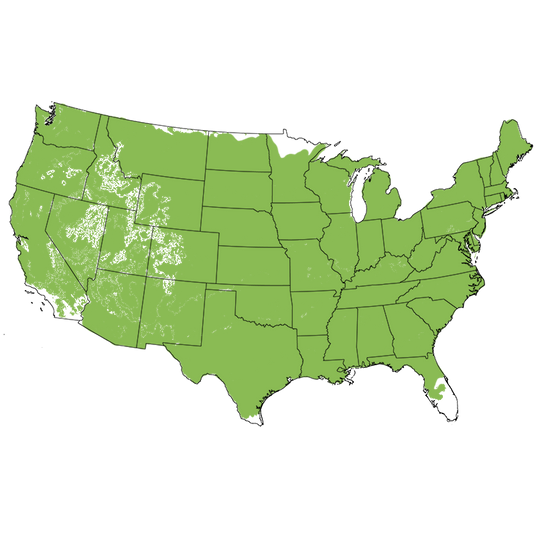
Growing Zones
Darling groundcover and trailing vine, Periwinkle (Vinca minor) is also known as Trailing Myrtle, Dwarf Periwinkle and Creeping Myrtle. This species of Periwinkle is one of the most popular and widely used ground covers! Plus you and your local butterflies will adore the purple blooms, as well as its easy-going and carefree nature!
Trailing stems with smooth, evergreen foliage up to 1.5" long, root at the nodes as they go along the ground and quickly spread to form an attractive ground cover. Tubular, lavender-blue, phlox-like flowers that can reach up to 1 inch across, appear in the leaf axils in spring and continue to flower intermittently throughout summer into fall! The glossy green foliage is bright and the entire plant remains low-growing!
This evergreen perennial is similar in all ways to Vinca Major except the flower is a little smaller. Hardy in USDA growing zones 4 through 9, these act as tender perennials and regrow from the ground each spring. Widely adaptable for sun through shade and highly tolerant of any well-drained soil type and moisture availability.
Planting and Application:
Fantastic as groundcover and erosion control, plant 12-18" apart to cover large areas, the tops of retaining walls, hard-to-mow slopes and hillsides. Cover large areas of bare ground or tricky soil where nothing else seems to thrive in all conditions from sun to shade.
Great for acting as living mulch and winding around larger shrubs and perennials, or in Rock gardens and rambling over retaining walls and tiered gardens. Also great additions to window boxes, containers and planters as a creeping and trailing addition! Let ramble over the sides of urns while surrounding a central specimen plant or tree, giving an elegant and formal effect!
- Long Trailing Green Leaves
- Lovely Purple Blossoms
- Lavender Blue Flowers Throughout the Season
- Evergreen or Perennial Vine
- Container Spiller, Groundcover, Cascading & Erosion Control
#ProPlantTips for Care:
Easily grown in average, dry to medium wet, well-drained soil in full sun to part shade, Vinca tolerates full shade, but it prefers moist, humusy soils in part shade. Prune when dormant in late winter or early spring.
- Full Sun, Part Sun/Shade & Full Shade
- Dry or Moist Soils in Part Shade
- Any Well-Drained Soil
- Prune in Winter or Early Spring
- Evergreen in Warm Climates
For low-maintenance greenery and groundcover that's elegant and cascading, while being tough-as-nails, you can't go wrong with the darling Periwinkle Vinca Vine available at NatureHills.com today!



